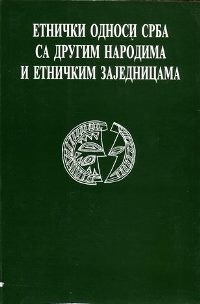Етнички односи Срба и Румуна у Банату
Ethnic Relations Between the Serbs and Rumanians in Banat
Author(s): Mirjana Maluckov
Subject(s): Inter-Ethnic Relations, Ethnic Minorities Studies, Identity of Collectives
Published by: Етнографски институт САНУ
Summary/Abstract: The Serbs and the Romans have been living together for centuries in a very close neighbourhood. They managed to preserve the two main features of their national entities: different languages and the same religion.
Rumanians lived in bigger or smaller numbers in 37 villages and towns in Banat in the middle of the 19th century. Those are: Bela Crkva, Kovin, Pan~evo, Vr{ac, Zrenjanin and later Novi Sad. According to background of some groups, Rumanians in Banat can be called Bana}ani, Kri{ano - Erdeljci and Oltenci. Inhabitants of some settlements in the neigbourhood of Vr{ac are mostly Rumanian, and they are considerd to be the oldest part of Rumanian inhabitants in this area.
Both Serbs and Rumanians had different names for smaller groups of inhabitants. Those names were pottery makers, police and peasants. Most Rumanians and elderly Rumanian women speak today both Rumanian and Serbian. If there is only one person who is Serbian, they do it as a rule. Different attitudes towards organization of church life were coordinated after gaining independence of the Rumanian Orthodox Church (1864). In Arabian - Rumanian settlements there are two Orthodox Churches in each settlement (each for one nationality), and they cooperate well. As a minority, the Rumanians kept inter ethnic endogamy concerning marriage relationships. But, there were also cases when Rumanian daughters - in - law changed the ethnic look of Serbian village and vice versa. There was endogamy in some Rumanian ethnic groups concerning marriage as a result of specifications in folk costume, diet etc. In the last few decades, structure qualification of Rumanians from Banat has been changed: there is smaller percentage of farmers and bigger percentage of tradesmen and intellectuals educated in Rumania. There are many Rumanians from Banat who moved to the USA, searching for better life. But that has nothing to do with the relation between them and the Serbs.
Book: Етнички односи Срба са другим народима и етничким заједницама
- Page Range: 145-156
- Page Count: 12
- Publication Year: 1998
- Language: Serbian
- Content File-PDF

